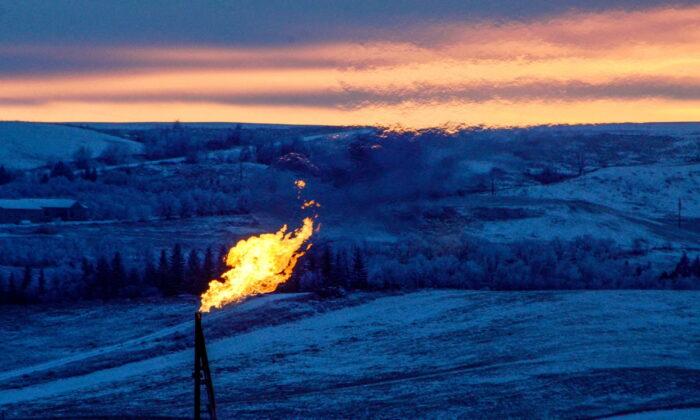Americans across the country will be paying more for natural gas this winter season, according to a report by the U.S. Energy Information Administration (EIA).
The Midwest region is expected to see the biggest increase, with household gas costs rising by 33 percent. The next highest is the West with a 29 percent increase, followed by the South with a 24 percent increase, and the Northeast with a 23 percent increase.
In such homes, the EIA is forecasting average household gas consumption for the winter to be at 58,000 cubic feet (Mcf), which would be an increase of 5 percent from last winter.
“We forecast a 4 percent to 5 percent increase in average natural gas consumption per household in the Northeast, Midwest, and West. We expect residential natural gas consumption in the South to be 46 Mcf this winter, up 7 percent from last winter,” the report said.
“The residential natural gas price for homes in the United States that heat primarily with natural gas will average about $16/Mcf, up from an average of $13/Mcf last winter.”
The EIA believes higher retail natural gas prices will be the main driver for the increase in natural gas bills this winter. On average, retail natural gas prices are expected to rise from last winter’s price of $13.02 per Mcf to $15.95 per Mcf, an increase of 22.5 percent.
US Exports
With natural gas prices set to rise, there have been calls for limiting exports. In September, the Industrial Energy Consumers of America (IECA)—a trade group representing chemical, food, and materials manufacturers—asked the Department of Energy to order U.S. liquified natural gas (LNG) producers to cut down on exports.The request came as U.S. natural gas prices rose to $5.22 mmBtu by mid-September from $2.54 per million British thermal units (mmBtu) in January. Exports are up 41 percent compared to the previous year.
In addition, it might also lower inventory levels, put upward pressure on consumer fuel prices, and alienate the United States from its allies during a time of war, they warned.





